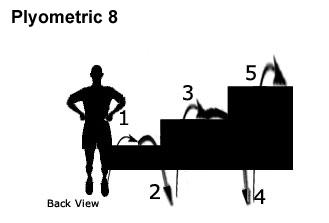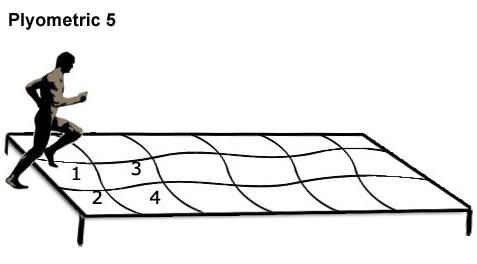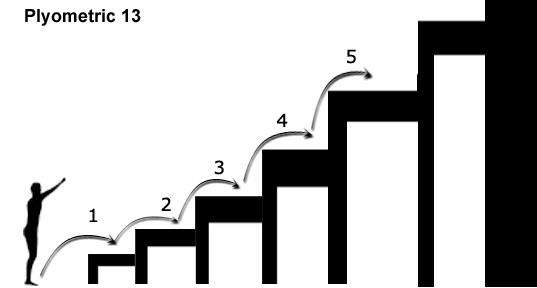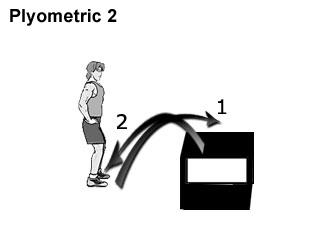In today’s fast-paced world, the desire to move swiftly and efficiently is more prevalent than ever, whether you’re an athlete striving for a competitive edge or simply looking to enhance your overall fitness. The journey to increasing your speed can often seem daunting, filled with complex training regimens and conflicting advice. However, one approach that consistently stands out for its effectiveness and accessibility is plyometric exercises. These dynamic movements not only promise to boost your speed but also enhance your strength, agility, and coordination. In this article, we’ll guide you through the essentials of plyometric training with empathy and clarity, ensuring you feel supported and informed every step of the way. Whether you’re a seasoned athlete or a beginner eager to unlock your potential, we’re here to help you harness the power of plyometrics to propel you toward your speed goals.
Understanding the Science Behind Plyometrics
Plyometrics, often referred to as “jump training,” is a powerful method to enhance speed and agility. At its core, it involves exercises that focus on explosive movements, helping athletes tap into their fast-twitch muscle fibers. By engaging in these dynamic movements, you can effectively improve your ability to exert maximum force in the shortest possible time, which is crucial for activities that require speed.
- Muscle Elasticity: Plyometrics leverages the natural elastic properties of muscles and tendons. When you jump or bound, your muscles are stretched, storing potential energy. This stored energy is then released when you contract the muscles, resulting in a more powerful movement.
- Nervous System Training: These exercises also train your nervous system to respond faster. By repeatedly practicing explosive movements, your body learns to recruit muscle fibers more efficiently, which translates to quicker and more powerful movements.
- Improved Coordination: Plyometrics require a high level of coordination. As you progress, your body learns to move more fluidly, synchronizing your movements for better overall performance.
| Exercise | Benefit | Tip |
|---|---|---|
| Box Jumps | Enhances vertical leap | Focus on landing softly |
| Bounding | Improves stride length | Keep a steady rhythm |
| Depth Jumps | Boosts reactive strength | Use a moderate height box |

Choosing the Right Plyometric Exercises for Your Goals
When it comes to boosting your speed, selecting the right plyometric exercises is essential. These exercises are designed to enhance your explosive power, agility, and overall athletic performance. To tailor your workout to your specific goals, consider incorporating a mix of these key exercises:
- Box Jumps: Excellent for developing lower body strength and explosive power, these can help improve your vertical leap and sprinting ability.
- Depth Jumps: This advanced exercise focuses on building reactivity and speed by emphasizing quick ground contact times.
- Bounding: A dynamic movement that enhances both leg power and coordination, aiding in longer strides and quicker acceleration.
To help you decide which exercises to incorporate based on your fitness level, consider the following table:
| Fitness Level | Recommended Exercises |
|---|---|
| Beginner | Box Jumps, Lateral Jumps |
| Intermediate | Bounding, Plyo Push-Ups |
| Advanced | Depth Jumps, Single-Leg Hops |
Remember, it’s crucial to match the intensity and complexity of these exercises with your current fitness level to prevent injuries and ensure progressive improvement. Listening to your body and consulting with a fitness professional can also guide you in creating a personalized and effective plyometric routine.

Building a Safe and Effective Plyometric Routine
Creating a plyometric routine that is both safe and effective requires a thoughtful approach, focusing on proper technique, gradual progression, and adequate recovery. Proper form is crucial to prevent injuries and maximize performance. Start with basic movements such as squat jumps or box jumps, ensuring your landing is soft and controlled. Gradually increase the complexity and intensity of exercises as your body adapts, always listening to any signals it gives you.
Here are some key tips to ensure your routine is well-rounded and beneficial:
- Warm-up: Begin with a dynamic warm-up to prepare your muscles and joints for explosive movements.
- Progressive Overload: Increase intensity or volume incrementally to continually challenge your body.
- Rest and Recovery: Incorporate rest days to allow your muscles to repair and grow stronger.
- Footwear: Wear supportive shoes to cushion your landings and protect your joints.
| Exercise | Reps | Sets |
|---|---|---|
| Squat Jumps | 10-12 | 3 |
| Box Jumps | 8-10 | 3 |
| Burpees | 8-10 | 3 |
By adhering to these guidelines, you can build a plyometric routine that not only enhances your speed but also supports long-term health and performance. Remember, consistency is key, and patience will yield the best results over time.

Tips for Measuring Progress and Staying Motivated
Measuring your progress and staying motivated are crucial when working to increase your speed with plyometric exercises. Consistency is key, but so is knowing how to track your improvements effectively. Here are some strategies to help you stay on track and motivated:
- Set Clear Goals: Begin with specific, measurable goals. Whether it’s shaving seconds off your sprint time or increasing the height of your box jumps, having clear objectives gives you something tangible to aim for.
- Track Your Workouts: Use a fitness journal or app to record your workouts. Note the exercises performed, repetitions, sets, and any personal bests. This helps you identify patterns and areas for improvement.
- Celebrate Small Wins: Recognize and celebrate even the smallest improvements. Every inch higher or second faster is a step toward your larger goal.
Consider using a simple table to log your progress. This visual representation can be a powerful motivator:
| Week | Exercise | Repetitions | Time/Height |
|---|---|---|---|
| 1 | Box Jumps | 15 | 20 inches |
| 2 | Box Jumps | 18 | 22 inches |
Remember, progress isn’t always linear. There will be ups and downs, but by keeping track of your achievements and focusing on your goals, you’ll find the motivation to push through challenges and reach new heights.








































